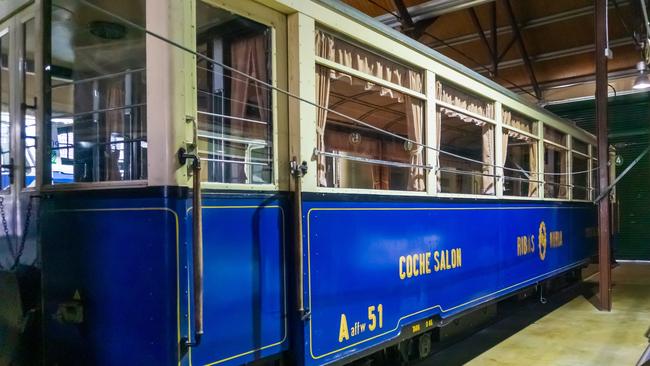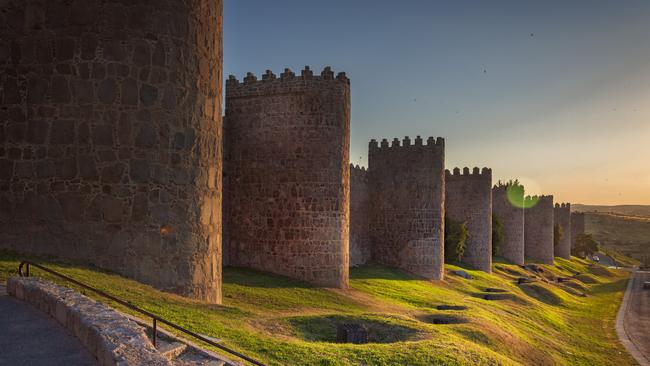Luxury train journeys in Spain
The iconic El Transcantabrico has been reimagined, bringing new levels of comfort to Iberian tracks.

There is something especially delightful about being on a train beside the sea, particularly if that sea is the Bay of Biscay en route to Oviedo in northern Spain. For just over 96km, the railway skirts underexplored, lonely beaches ribboned with surf and sweeps across estuaries on lofty viaducts. It is these less-visited shores that are in the spotlight this year, due in no small part to the newly launched Tren Costa Verde Express. Tracing the region’s narrow-gauge tracks, it is a new incarnation of the iconic El Transcantabrico, Spain’s first tourist train in 1983, and still hailed as one of the world’s finest. The six-day journey between Santiago de Compostela and Bilbao uses more modern coaches than its predecessor and, as on El Transcantabrico, there is a strong focus on gastronomy, with sumptuous breakfasts on board and most dinners enjoyed in restaurants that provide insights into the culinary traditions of Galicia, Asturias, Cantabria and the Basque Country. A good choice of wines from northern Spain is included.

But it is also a special year for El Transcantabrico itself, which is marking its 40th anniversary and still stands as the most luxurious way to experience northern Spain by rail. Interestingly, though, its origins are far from refined: the name comes from the title of a book by Spanish novelist Juan Pedro Aparicio, who wrote about travelling on the coal train known as the Hullero, from his native Leon to the blast furnaces of Bilbao. Though Bilbao still makes steel today, the city has undergone an extraordinary makeover since El Transcantabrico’s first run in July 1983. So, too, have the train’s coaches – the day carriages are the same ones ordered from the Leeds Forge company for a luxury train from Bilbao to San Sebastian in 1927, but restored to emulate the Orient Express-style decadence of the 1920s, with sumptuous interiors and plenty of space for lounge areas, dining and even dancing. The sleeping cars are converted railcar trailers, made unrecognisable by the insertion of four generous-sized ensuite rooms. (The shower is a mini masterpiece, made luxurious with the addition of sauna and hydromassage features.)

The eight-day route takes passengers from Santiago de Compostela, in Galicia, to San Sebastian (or vice versa), close to the French border, with no movement at night, to please those who struggle to sleep on the move. The itinerary option originating from Santiago de Compostela begins with lunch in the city’s monumental parador (one of the grand state-owned hotels), which was once the guesthouse for poor pilgrims visiting Santiago’s cathedral. As it winds along the coast, the train often weaves inland through eucalyptus forests, each day punctuated with excursions by coach and boat. Sights include the beach of Las Catedrales, with its rock formations; the Picos de Europa National Park; a 9th-century church in Oviedo; and the extraordinary cave paintings of Altamira. Together with Al Andalus, the classic itinerary that takes in the urban highlights of Andalucia, these are the tourist trains of the Spanish national railway, Renfe. However, Renfe’s new flagship trains are no less impressive, benefiting hugely from Spain’s investment in its high-speed rail network, now Europe’s largest at almost 4190km. This year will see a flowering of new services following the liberalisation of train operations, which allows new rivals to dilute Renfe’s monopoly, so there are now four operators between Madrid and Barcelona.

France’s Ouigo budget high-speed trains, meanwhile, serve Madrid, Barcelona, Tarragona, Valencia and Zaragoza, and Renfe’s Avlo high-speed trains offer lower-cost fares than its flagship Ave trains. Last year also saw the launch of new Iryo high-speed services from Madrid to Barcelona and Valencia, and this year it is expected that Iryo trains will link Madrid with Cordoba, Malaga, Seville and Alicante. Another reason to use Spanish trains in 2023 is that the government is addressing both climate change and the cost-of-living crisis by making short and medium-distance trains free. It requires a nominal deposit of €10-€20 ($15.50-$31), refundable once 16 trips are made, and is of particular use to leisure travellers who want to explore from a single base, staying for a week in one of the principal cities. And although a tourist is unlikely to use a pass enough to earn a refund, the saving on just two journeys can justify losing the deposit.

You will hardly be short of inspiration for places to go, either. Looking at Madrid alone, the line to Avila is worth two days: first to El Escorial, which is reached as the railway climbs into the Sierra de Guadarrama to offer a fabulous view of Philip II’s palace and 16th-century monastery. The line continues through wild countryside to Avila, home to immense city walls with their 88 semicircular towers. Also, to the west of the Spanish capital is the line to Segovia, well worth a visit for its Roman aqueduct and fairytale castle.
More to the story
In the know
Australia-based specialist rail holiday package operators include Great Trains of Europe and Rail Bookers. International Rail and Rail Europe are official distributors of Eurail passes and tickets on Spain’s Renfe network.

To join the conversation, please log in. Don't have an account? Register
Join the conversation, you are commenting as Logout